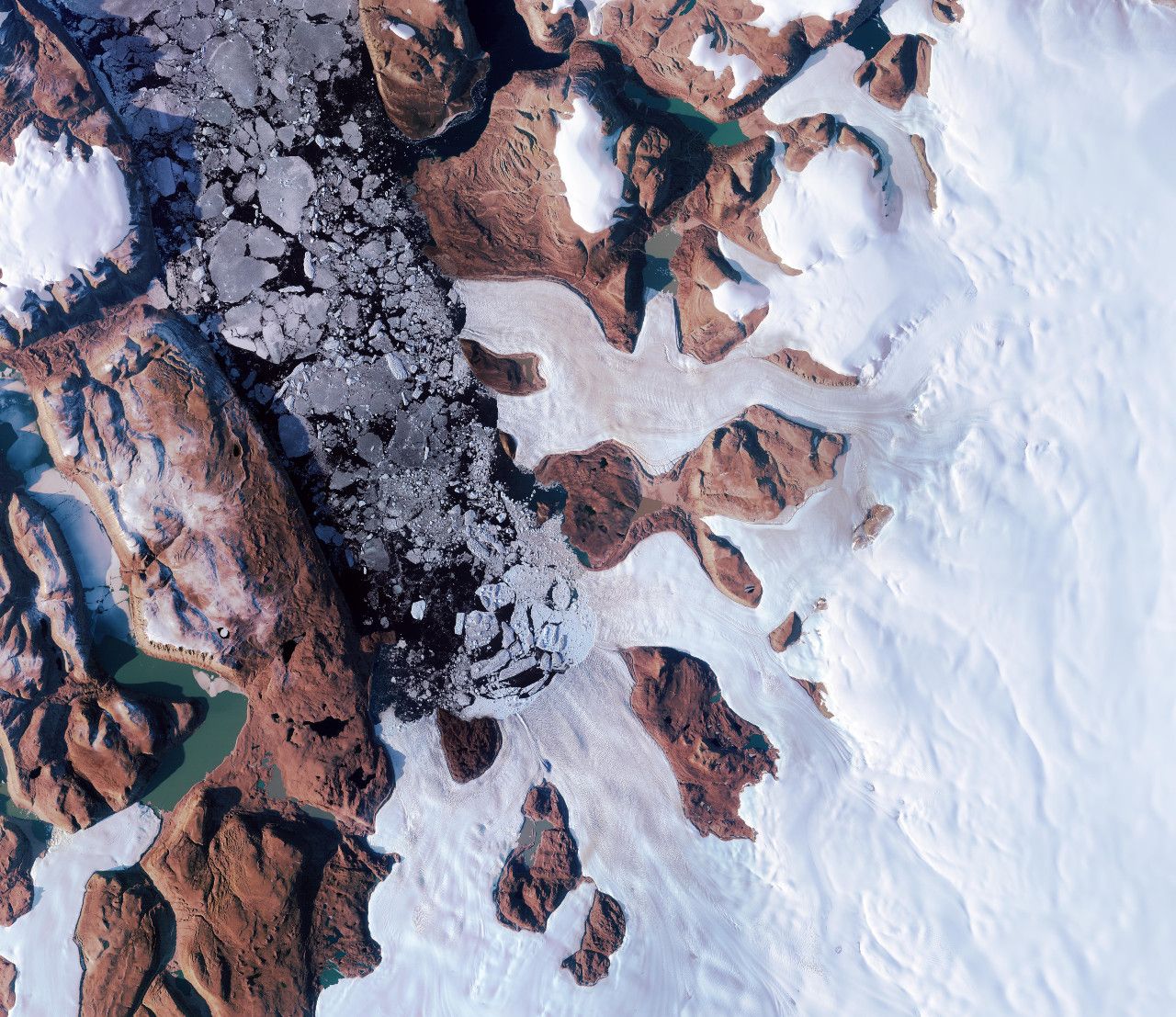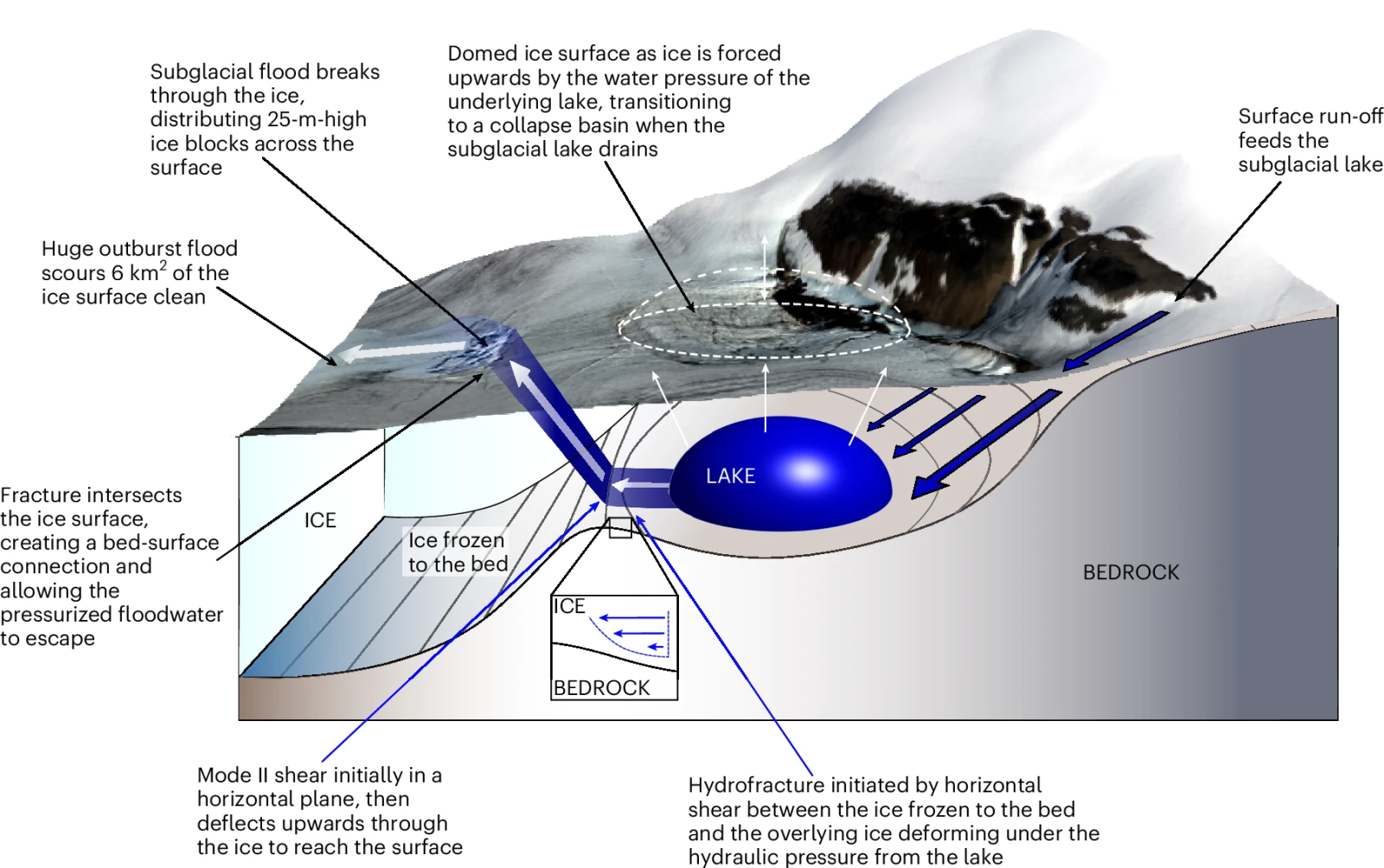🌊 90 billion liters of water fractured Greenland's ice in one go: an unprecedented deluge
Published by Cédric,
Article author: Cédric DEPOND
Source: Nature Geoscience
Other Languages: FR, DE, ES, PT
Article author: Cédric DEPOND
Source: Nature Geoscience
Other Languages: FR, DE, ES, PT
Follow us on Google News (click on ☆)

Credit: modified Copernicus Sentinel data (2024), processed by ESA
Until now, scientists imagined meltwater flowing gently from the surface to the base of the ice to reach the ocean. The reality turns out to be far more spectacular and violent. The study of this phenomenon, made possible in part by meticulous analysis of data from the European Sentinel and CryoSat satellites, reveals that the reverse movement is possible: water can surge upward with a force capable of pulverizing the ice in its path.
A subglacial cataclysm of unprecedented scale
The event occurred in an isolated region of northern Greenland, where scientists identified a previously unknown subglacial lake. Its sudden drainage caused a hydraulic shock wave of rare intensity. In just ten days, 90 million cubic meters of water surged toward the surface, carving out an impressive crater 85 meters (279 feet) deep over an area of 2 square kilometers (0.77 square miles).
The violence of the flow did more than create this gaping crater. Downstream, the glacial landscape was transformed into a field of icy ruins, where massive blocks as tall as eight-story buildings were torn loose and scattered. The surface, plowed by the torrent, bears the scars of this ordeal, visibly distinct from ordinary melting caused by warming air.

Catastrophic drainage of a subglacial lake.
Surface runoff feeds a pressurized lake at the base of the glacier. The overpressure bulges the ice surface, then horizontal shear initiates a hydrofracture (mode II) that propagates upward, reaches the surface, and creates a bed–surface connection. The ensuing sudden drainage triggers a subglacial flood: the ice is torn open, blocks about 25 m (82 ft) high are scattered, and ~6 km² (2.3 sq mi) of ice surface are scoured, leaving a collapse basin above the drained lake.
What makes this episode particularly intriguing for glaciologists is its location. It occurred in an area where theoretical models predicted that the base of the ice sheet was permanently frozen to the bedrock, making such a hydraulic phenomenon impossible. This stark contradiction shows that our knowledge of the conditions beneath the ice is still incomplete.
Potential consequences for the future of the ice sheet
The discovery, published in the journal Nature Geoscience, implies that hydrological processes beneath the ice sheet are very different and more dynamic than expected. Researchers suggest that the extreme water pressure must have caused fracturing of the ice from its base, creating faults and conduits through which the flow could rush to reach the surface.
This explosive upward surge of water raises important questions about the mechanical stability of the ice sheet. Such events, if repeated or intensified, could potentially affect the overall flow of ice toward the ocean by altering the lubrication of its base. Their impact on the total mass loss of the ice sheet remains to be quantified.
The most immediate lesson is perhaps the challenge to the models used to predict the evolution of Greenland's ice. These do not account for this type of fracturing and water upwelling mechanism. Integrating these new processes has become a priority to improve the reliability of projections regarding the ice sheet's contribution to sea level rise.